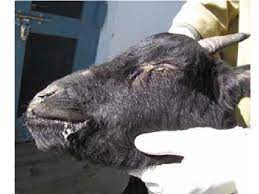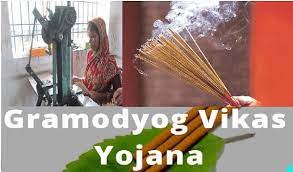Today’s Current Affairs: 7th Jul 2023 for UPSC IAS exams, State PSC exams, SSC CGL, State SSC, RRB, Railways, Banking Exam & IBPS, etc
Table of Contents
Sohagi Barwa Wildlife Sanctuary : Leopard Found Dead

A leopard was recently found dead in the Sohagi Barwa Wildlife Sanctuary in Uttar Pradesh.
- Sohagi Barwa Wildlife Sanctuary is situated in the Maharajganj district of Uttar Pradesh.
- On the northern side, the Sanctuary shares the international boundary with Nepal, and on the eastern border is Bihar’s Valmiki Tiger Reserve.
- It was declared a Wildlife Sanctuary in June 1987.
- It is drained by the great Gandak, the little Gandak, Pyas and Rohin rivers.
- It is almost flat with an average height of 100mtrs above mean sea level.
- The area gently slopes from North–West to South–East.
- Nearly 75% of the area consists of Sal forest, and other humid areas are covered with Jaamun, Gutal, Semal, KhairTrees, etc.
- Lower region of the sanctuary, which is water logged during rains, consists of Grasslands and patches of Cane forests.
- It is inhabited by a variety of animals which mainly includes Leopard, Tiger, Jungle Cat, Small Indian Civet, Langur, Deer, Blue Bull, Wild boar, Porcupine etc.
- The Avifauna is varied with Little Cormorant, Snake Bird, Brahimini Duck, Common Teal, Little Egret, Cattle Egret, Paddy Bird etc.
Peste Des Petits Ruminants : Contagious Animal Disease

An outbreak of a highly contagious animal disease, Peste Des Petits Ruminants, has recently killed 60 sheep and goats and affected around 200 in the highland pastures of the Lahaul and Spiti district of Himachal Pradesh
- Peste Des Petits Ruminants (PPR) is a highly contagious viral disease of sheep and goats with high mortality.
- It is caused by a virus of the family paramyxoviridae and genus morbillivirus. It is closely related to other members of the genus, including the rinderpest virus, measles virus, and canine distemper virus.
- PPRV causes disease with an array of clinical signs. It also causes immunosuppression, which makes affected animals more likely to pick up other infections.
- Clinical signs of PPR: Fever, Eye and nasal discharges, Sores in the mouth, Diarrhoea, Listlessness, Respiratory signs (coughing and pneumonia), Abortion and death, with case fatality rates as high as 90% (though more commonly around 20%).
- PPR is mainly spread during close contact when a susceptible animal inhales the virus from infected animals’ coughing and sneezing.
- Transmission can also occur indirectly through contact with infected objects (fomites) such as feed troughs, bedding etc.
- Sources of PPRV include secretions from the eyes, nose, and mouth of infected animals, as well as their faeces.
- Once introduced, the virus can infect up to 90 percent of an animal herd, and the disease kills anywhere from 30 to 70 percent of infected animals.
- The PPR virus does not infect humans.
- In India, the disease outbreaks have been reported in Himachal Pradesh, Andhra Pradesh, West Bengal, Telangana, Karnataka and Chhattisgarh.
Gramodyog Vikas Yojana:

The Lieutenant Governor of Delhi distributed Honey Bee-Boxes and Toolkits to 130 beneficiaries in the program which was organized under the ‘Gramodyog Vikas Yojna’ of Khadi and Village Industries Commission (KVIC).
- Gramodyog Vikas Yojana is one of the two components of Khadi Gramodyog Vikas Yojana which aims to promote and develop the village industries through common facilities, technological modernization, training etc.
- It includes the activities carried out under different village industries.
- Components of the Yojana
- Research & Development and Product Innovation: R&D support would be given to the institutions that intend to carry product development, new innovations, design development, product diversification processes etc.
- Capacity Building: Under the Human Resource Development and Skill Training components, exclusive capacity building of staff as well as the artisans would be adequately addressed through the existing MDTCs and institutions of excellence.
- Marketing & Publicity: The V.I. institutions will be provided market support by way of preparation of product catalogue, Industry directory, market research, new marketing techniques, buyer seller meet, arranging exhibitions etc.
Khadi and Village Industries Commission:
- It is a statutory body established under the Khadi and Village Industries Commission Act, of 1956.
- The KVIC is charged with the planning, promotion, organisation and implementation of programmes for the development of Khadi and other village industries in the rural areas in coordination with other agencies engaged in rural development wherever necessary.
JIMEX 2023:

The Indian Navy is hosting the bilateral Japan-India Maritime Exercise 2023 (JIMEX 23), which takes place at Visakhapatnam.
- JIMEX 2023 edition marks the 11th anniversary of JIMEX, since its inception in 2012.
- This exercise will witness the participation of INS Delhi, INS Kamorta, fleet tanker INS Shakti, a submarine, maritime patrol aircraft P8I and Dornier, ship-borne helicopters and fighter aircraft.
- The exercise will be conducted over six days in two phases.
- A harbour Phase at Visakhapatnam comprising professional, sports and social interactions.
- The two navies will jointly hone their war fighting skills at sea and enhance their interoperability through complex multi-discipline operations in the surface, sub-surface and air domains.
- JIMEX 23 provides an opportunity to learn from each other’s best practices and facilitates operational interactions between IN and JMSDF to foster mutual cooperation and reaffirm their shared commitment towards maritime security in the region.
World Investment Report 2023:

The United Nations Conference on Trade and Development (UNCTAD) published its World Investment Report 2023.
Key findings:
- India and ASEAN were the most buoyant recipients of the Foreign direct investment (FDI), with increases of 10 and 5%, respectively.
- FDI inflows were higher in developing countries compared with those in developed economies.
- China, the second largest FDI host country in the world, saw a 5% increase.
- FDI in the Gulf region declined, but the number of project announcements increased by two thirds.
- Inflows in many smaller developing countries were stagnant, and FDI to the least developed countries (LDCs) declined.
- Much of the growth in international investment in renewable energy has been concentrated in developed countries.
- The investment gap across all sectors of the Sustainable Development Goals has increased to more than $4 trillion per year from $2.5 trillion in 2015.
- The largest gaps are in energy, water and transport infrastructure.
United Nations Conference on Trade and Development:
- It is a permanent inter-governmental body established by the United Nations General Assembly in 1964.
- It is responsible for dealing with development issues, particularly international trade.
- Framing policies in various domains such as trade, technology, finance, aid, and transport are the most important priorities of UNCTAD.
Scheme For Expansion And Modernization Of Fire Services In The States:

The Ministry of Home Affairs, Government of India has launched a “Scheme for Expansion and Modernization of Fire Services in the States (SEMFSS)” under the National Disaster Response Fund (NDRF) for strengthening fire services in the States.
- The Scheme finds its origin from the recommendation of the Fifteenth Finance Commission (XV-FC) which allows an allocation of 12.5 % of each of the NDRF and State Disaster Response Fund (SDRF) for the Funding Window of Preparedness and Capacity Building.
- The objective of the scheme is to expand and modernize Fire Services in the States with a view that activities for strengthening of fire services at the State-level through preparedness and capacity-building components of the NDRF will be ensured.
- Out of the total NDRF corpus, an amount of Rs. 5,000 Crore was earmarked for priority “Expanding and Modernization of Fire Services”.
- The amount of Rs. 500 crores, out of the total outlay, has been kept for incentivizing the States on the basis of their legal and infrastructure-based reforms.
- For seeking funds for the projects/proposals under the Scheme, the concerned State Governments shall have to contribute 25% (except for the North-Eastern and Himalayan (NEH) States which shall contribute 10%) of total cost of such projects / proposals from their budgetary resources.
SAFF Championship 2023:

India marked a remarkable victory in the South Asian Football Federation (SAFF) Championship 2023 held in Bengaluru, Karnataka, securing their ninth title by defeating Kuwait in a thrilling football match.
- The SAFF Championship is an internationally recognized football tournament that brings together teams from the South Asian subcontinent. Organized by the South Asian Football Federation (SAFF), one of the five sub-confederations under the Asian Football Confederation (AFC).
- SAFF was formed in 1997 by founding Member Associations from Bangladesh, India, Maldives, Nepal, Pakistan and SriLanka.
- The SAFF Secretariat currently operates from Dhaka, Bangladesh.
- Founding members: India, Pakistan, Sri Lanka, Bangladesh, Nepal, and Maldives.
- Bhutan joined in 2000, while Afghanistan became a member in 2005 before moving to the Central Asian Football Association (CAFA) in 2015.
Mosaic Viruses : Loss Of Yield

Tomato growers in Maharashtra and Karnataka have blamed two different mosaic viruses for the loss of yields earlier this year.
- Tomato crop in Maharashtra was impacted by attacks of the cucumber mosaic virus (CMV), while in Karnataka and other South Indian states the farmers blaming tomato mosaic virus (TMV) for crop losses.
- Mosaic virus is a parasite that destroys plants, gardens, and crops down to their molecular level.
- Once a plant contracts the mosaic virus, the infected plant can then spread the virus to other plants and even affect an entire harvest if left untreated.
- It affects a wide variety of horticultural and vegetable crops — roses, beans, tobacco, tomatoes, potatoes, cucumbers, pumpkins, squash, melons, and peppers.
TMV:
- It belongs to the Virgaviridae family and is closely related to the tobacco mosaic virus (TMV).
- It hosts include tomato, tobacco, peppers, and certain ornamental plants.
- It spreads mainly through infected seeds, saplings, agricultural tools.
- It would require only a few infected saplings for the virus to take over an entire field in a matter of days.
- It can remain dormant in weeds and plant remains around the field, and come back later.
CMV:
- It has a much larger host pool that includes cucumber, melon, eggplant, tomato, carrot, lettuce etc.
- It was identified in cucumber in 1934, which gave the virus its name.
- It is spread by aphids which are sap-sucking insects.
- It can also spread through human touch, but the chances of that are extremely low.
- Conditions of high temperature followed by intermittent rain, which allow aphids to multiply, are conducive to the spread of CMV.
Chandrayaan III : Integrated With The GSLV Mark III

Chandrayaan III spacecraft was integrated with the GSLV Mark III launch vehicle recently. The launch is planned between 12-19th July 2023.
- Chandrayaan-3 is the successor to the Chandrayaan-2 mission.
- Launch Vehicle Mark-III (LVM3).
- Launched from Satish Dhawan Space Centre (SDSC), Sriharikota, Andhra Pradesh.
- It consists of an indigenous Lander module (LM), a Propulsion module (PM) and a Rover.
- Lander: a spacecraft that descends towards and comes to rest on, the surface of an astronomical body.
- Propulsion module: a box-like structure, mounted with a large solar panel on one side and a large cylinder on top.
- Rover: a small vehicle that can move over rough ground, often used on the surface of other planets, sometimes controlled from the earth.
- The Lander and the Rover have scientific payloads to carry out experiments on the lunar surface.
- There will not be any orbiters like Chandrayaan 2 in it. (UPSC CSE: CHANDRAYAAN-2)
- Objectives of Chandrayaan-3 mission:-
- To demonstrate a Safe and Soft Landing on Lunar Surface
- To demonstrate Rover roving on the moon and
- To conduct in-situ scientific experiments.
GSLV-Mk III:
- It is also known as the Launch Vehicle Mark 3 (LVM3).
- It is a three-stage vehicle with two solid motor strap-ons, a liquid propellant core stage and a cryogenic stage.
- It is the heaviest and the shortest among India’s operational launch vehicles.
- Weighs: 641 tonnes, which is equal to the weight of five fully loaded passenger planes.
- Capacity: GSLV can take 10,000-kg satellites to lower earth orbits.
Brahmos Missile : Philippine Army And India Negotiation

The Philippine Army has started negotiations with India’s BrahMos Corporation to acquire batteries of the BrahMos supersonic anti-ship cruise missile.
- Brahmos Missile is a supersonic cruise missile.
- It is a joint venture between the Defence Research and Development Organisation (DRDO) of India and NPOM of Russia.
- It is named after the rivers Brahmaputra and Moskva.
- It is a two-stage missile with a solid propellant engine in the first stage and a liquid ramjet in the second.
- The system has been designed with two variants for Anti-Ship and Land-Attack roles.
- Brahmos is one of the fastest cruise missiles currently operationally deployed with the speed of Mach 2.8,which is nearly 3 times more than the speed of sound.
- It has a launch weight of 2,200-3,000 kg.
- It operates on the “Fire and Forgets” principle, adopting varieties of flights on its way to the target.
- BrahMos is equipped with stealth technology designed to make it less visible to radar and other detection methods.
- It has an inertial navigation system (INS) for use against ship targets, and an INS/Global Positioning System for use against land targets.




